The Science Behind Golf’s Newest Putters
Over the last couple of months, there have been a few new putters that have created awesome breakthroughs in the game of golf and have some awesome science behind them. In this post we break them down, explain their differences and talk about what you should be looking for when you’re shopping!
Below we have listed 6 of the most notable new putters, what makes them special and how to discover which one is right for you.
PING Sigma G
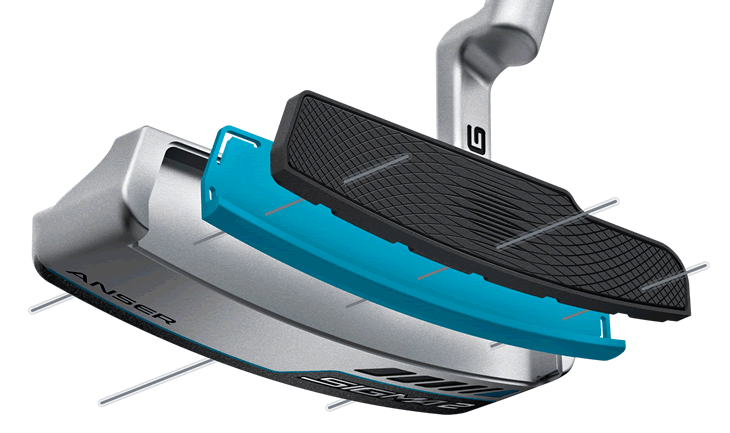
PING has a brand new line called the Sigma G and they’re using some awesome new technology as well as some things that have been in their lines previously to create a great putter.
On the face of the golf club, there are actually some special lines that initially draw your attention. Then, upon looking further, you will also notice that there is a bit more material on the sides of the face than in the middle.
What that does is if you hit the ball in the middle, it’s going to roll at a certain distance. But, if you hit a putt on the heel or toe, it’s actually going to roll out slightly farther, because there’s more material taken out of the center of the putter, and put on the sides of the putter.
Typically when you hit a ball off the heel or toe of a putter, it doesn’t roll nearly as far as when you hit it in the middle. So, what Ping has done is they’ve artificially taken it and made it slightly duller in the very center, and more pronounced on the sides. It’s totally legal with USGA and is basically compromising any deficiencies that you might have in your putting stroke.
Additionally, on the very tip of the grip of this putter, there’s actually a tool that goes down into it that and twists counterclockwise and clockwise, telescoping the grip up and down the shaft.
So whereas in the olden days you get a putter that might be 32, or 33, or 35 inches, this putter can go anywhere from 32 inches all the way to 36 inches, all within one single putter.
From a stocking standpoint, it’s made it really easy because we can actually fit anyone with any model of putter. All of the Sigma 2 putters have this and I would imagine that as they continue to evolve and add new putter lines, they’re going to have more and more of these putters.
SeeMore Putters
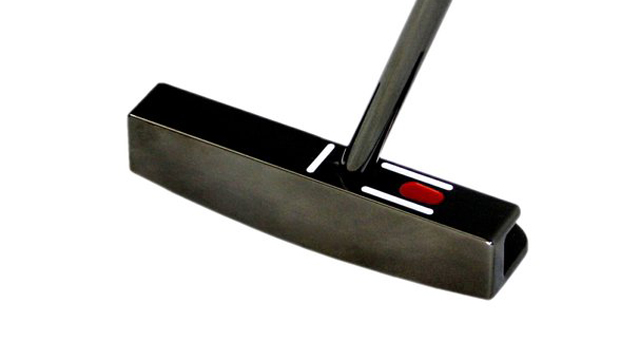
Number two is the SeeMore putters. We’ve carried SeeMore for a long time, but they have a variety of new mallet and blade heads that are available now with both cast and milled putter heads.
With the SeeMore putters, you’re actually going to see a little red dot on the heel. This is there because when you’re lining up your putt, you know that you’re directly over the ball when you can’t see the red. If you are in front or behind the ball, you will be able to see that red dot which means you aren’t correctly lined up.
When you’re set up correctly, you can’t see that red dot anymore, and you should only see the two white lines. This actually allows you to create a perfect setup and get perfectly aligned for every putt! When you can eliminate that red dot from your view you know you are set up correctly over the top of the ball.
Most people think that they’re lined up properly when they’re over a putt but actually, most of us, perhaps as many as 90% of us, are not. This includes Tour players.
This is why when we putt and things go left or right at the hole, we just aren’t lined up correctly.
So the cool thing about this new SeeMore putter is that red dot alignment aid and they have that on all SeeMore putters. It’s a unique standard thing that they put across their line on both their cast and their milled putters. That’s one of their biggest selling points.
Additionally, they have a center shaft with a groove in the middle and what they’re doing with this is they’re taking materials out of the back of the putter, and actually moving them back to increase the moment of inertia, which we’ll go into a bit later in this blog.
Odyssey Stroke Lab Putter
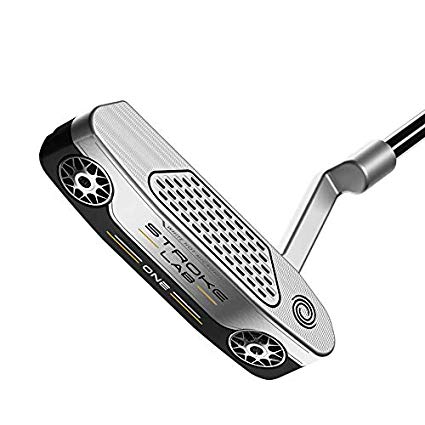
Next, we have the Odyssey putter and their brand new model called the Stroke Lab.
Odyssey is one of the best putter sellers out there with a number of different models!
Two big notable things with this putter are the face and the shaft. First, let’s discuss the face of the putter. You’ll see some little ridges in here that are small levers that are actually not flushed with the putter face.
If you looked at a microscope and looked at those ridges, they’re actually angled up against the putter face, almost like small scales.
These ridges are tiny springs so that when you hit the putter, it launches that ball back up and creates overspin on the ball which reduces ball bounce and skid so that you have a smoother, more accurate putt.
Having overspin on the ball sooner is going to create a more true roll and get you closer to the target that you’re aiming at.
The other big feature on this is actually Odyssey’s new Stroke Lab putter shaft. It’s half steel and half graphite which creates a counterbalanced putter with almost no torque on the shaft.
What this does is move weight up the end of the grip, add more weight at the bottom of the grip and try to take weight out in the middle. This will create a more pendulum-like stroke in concert with our hands. That should, therefore, create a smoother more consistent putt time and time again, as well as creating a more easily repeatable motion.
Additionally, Golf Digest recently gave this putter five out of five stars.
Odyssey O-Works Line
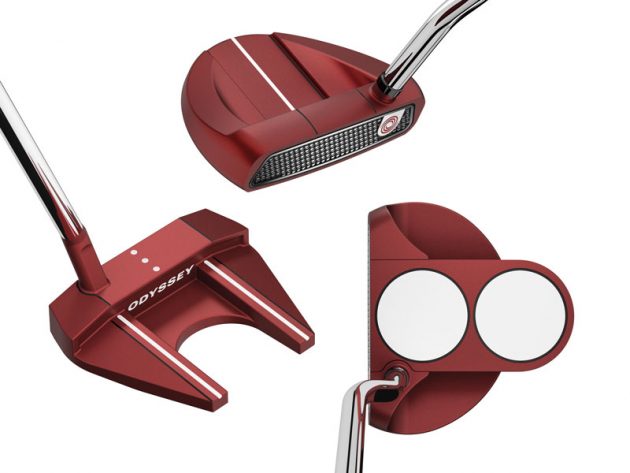
Odyssey also has their O Works line which includes their famous two ball putter. With the two-ball putter, you can see two discs on the top. When you line those discs up with a golf ball, the two discs and ball will create an alignment line that can be used to line up your putt. Statistics have shown that having the ability to line up putts like this towards the hole has made a phenomenal difference in a golfer’s confidence.
This putter comes in a number of different, styles, colors and designs so that it can be made to fit the preferences of almost any golfer.
Scotty Cameron
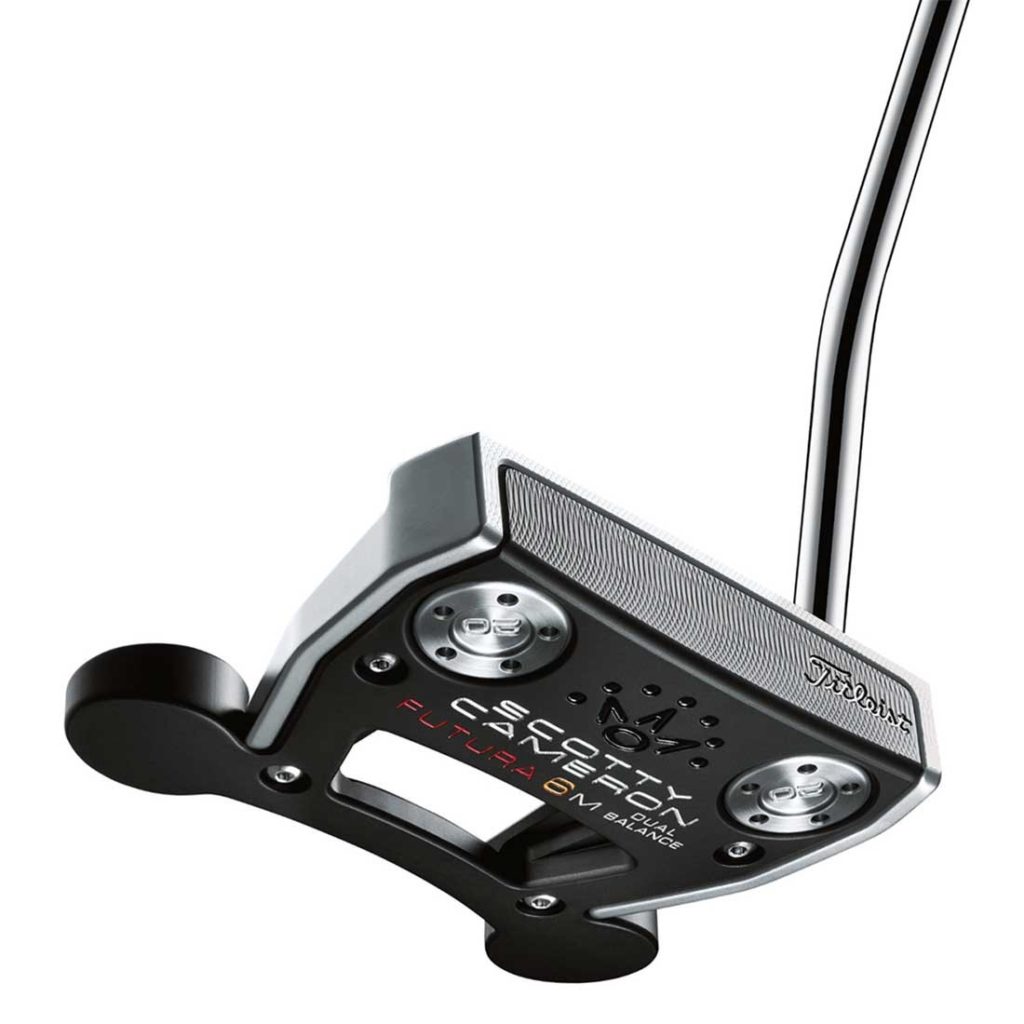
Let’s talk moment of inertia here. So with the brand new Cameron putters, the Futura and Concept, you’re going to see how it has this kind of spacecraft shape.
The Futura is made of aluminum, which is CNC milled, and it’s very lightweight, with the exception of these two discs that are in the back. Those are actually heavy tungsten screws that put more weight on the back of the putter.
What most companies are trying to do with mallet designs is that, while a blade putter is usually narrow from face to the back and all of them are the same distance in from heel to toe, a mallet putter can be almost any shape and size.
There are a million different wild designs here, but what the vendors are trying to do with mallets, is actually move the center of gravity further back.
With a blade putter, the center of gravity is right up towards the face of the putter and right behind the center spot. What happens is that when you hit a ball off the heel or toe, the putter will twist, causing you to lose power and the ball to roll off course.
But, with a mallet patter, they’re able to get the center of gravity moved back in the golf club which causes less twisting in the clubface. This same concept is used in almost all clubs, namely, drivers where we are seeing more and more tungsten weights that are putting the center of gravity farther in the back of the club and reducing twisting of the clubface.
With the two big heavy tungsten screws in the Cameron putter, the center of gravity, that moment of inertia, is dramatically increased because that weight is pushed back in the golf club causing the heel or toe to twist far less.
So if you hit the ball with a center of gravity that is farther back then it won’t twist as much on impact with the ball and allow you to hit it as hard as anticipated even if you happen to hit it more on the heel or toe because it requires a lot more energy to cause your club to twist in this case.
Taylor Made Spider
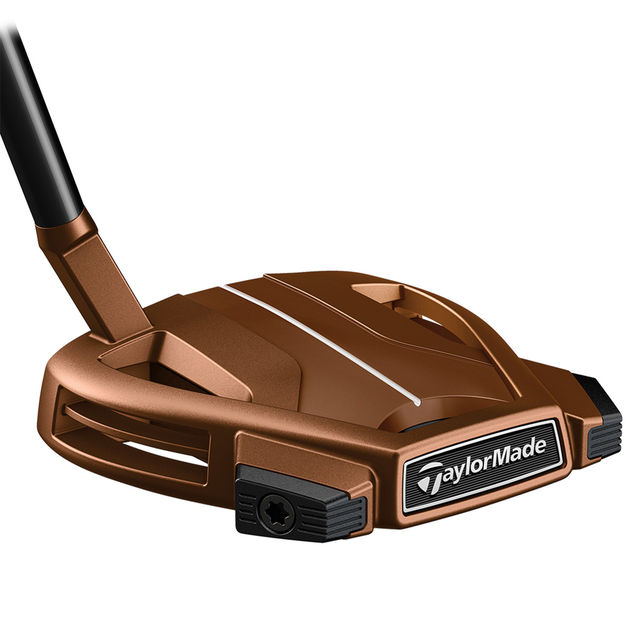
Here is another mallet putter, the Taylor Made Spider Putter. Dustin Johnson and Jason Day made these really famous a couple of years ago and they are actually now available in any color combination that you could want.
This putter is also made of aluminum like the Cameron, very lightweight metal. You’ll also see on this club two black marks that are actually two very heavy tungsten weights that go off the back and that moves that center of gravity back in the golf club and allows you to increase the moment of inertia so that no matter where you hit on the face, it’s going to roll at the same distance and it’s going to roll it straighter.
How to Know Which is Best For You
The beautiful part about putters is that it’s all personal. Some people do not like the idea of using the mallet putters, even though the technology is proven to be able to help you. If you’re looking over it and you don’t have confidence that this is better for you then it won’t work.
With so many different weights, styles, colors, and a number of other variables, the best thing to do is to try them side by side and get fitted with the putter that works best for your skill level and playing style. Hit them side by side and actually narrow down for yourself what you feel most confident with.

